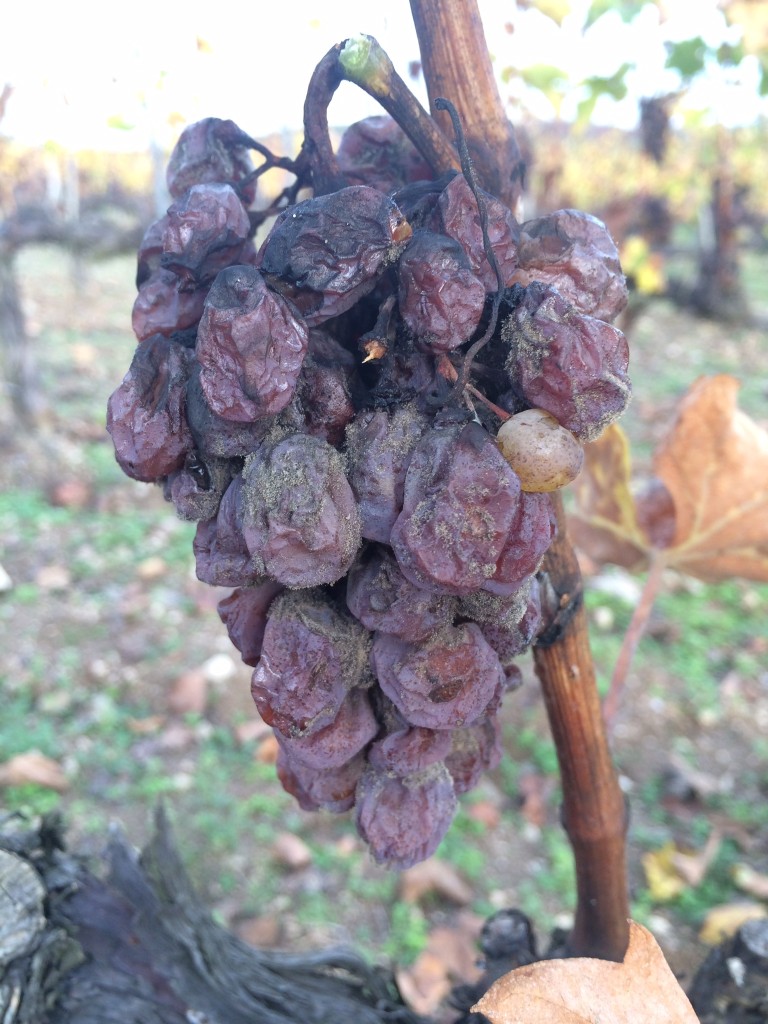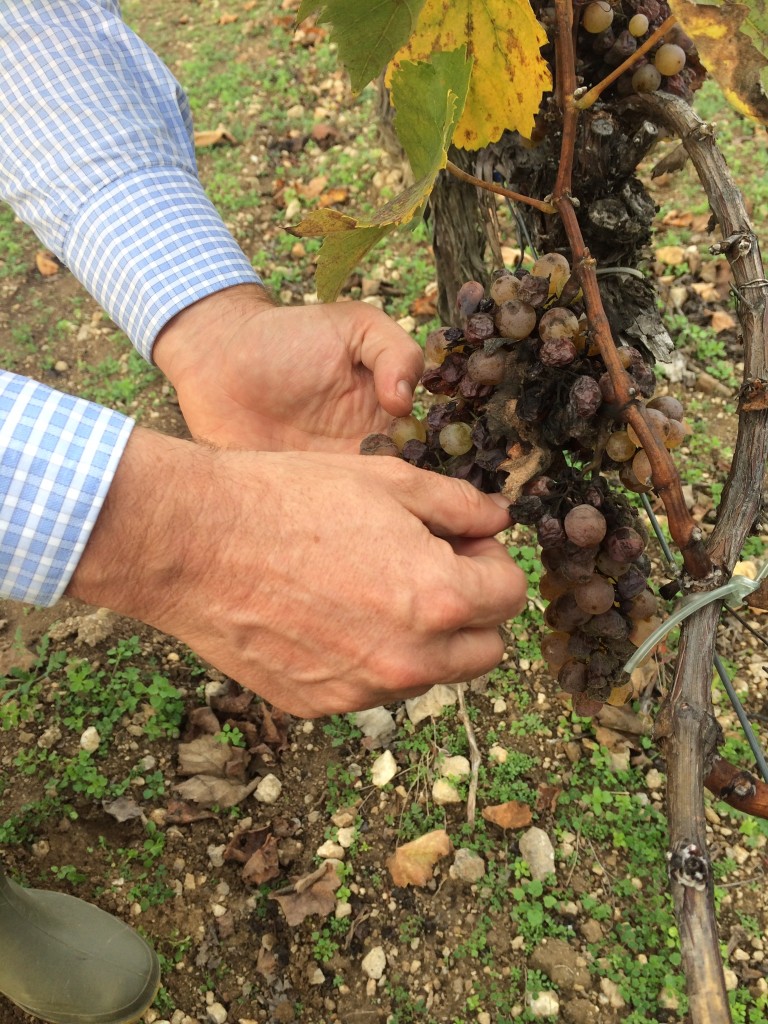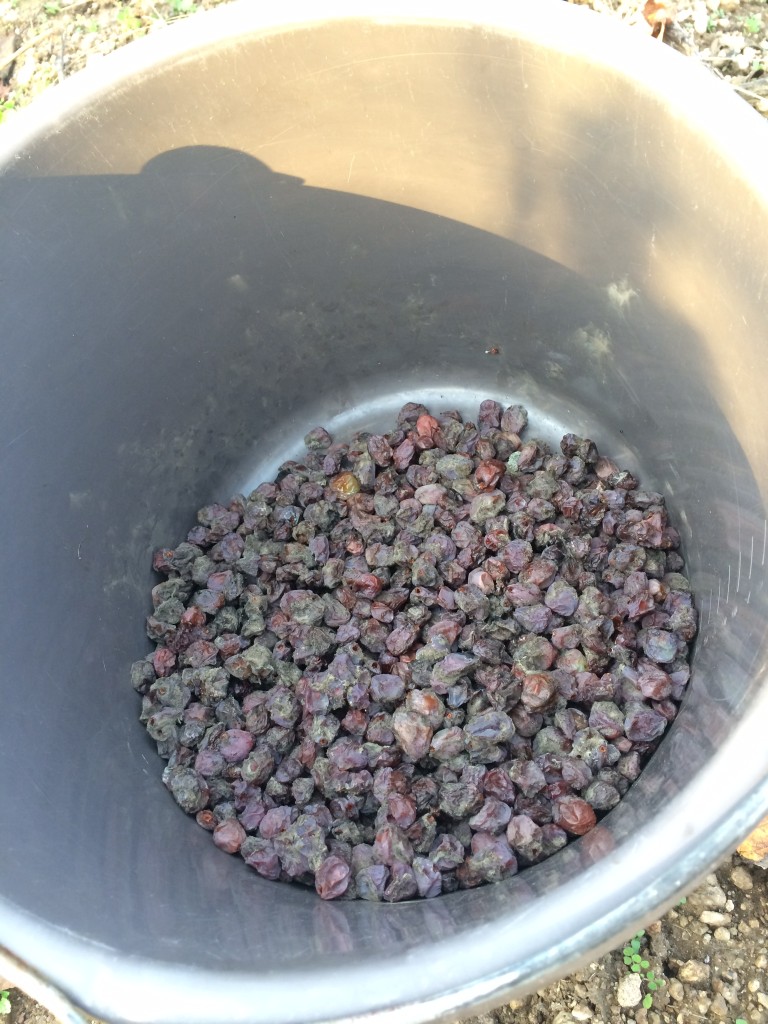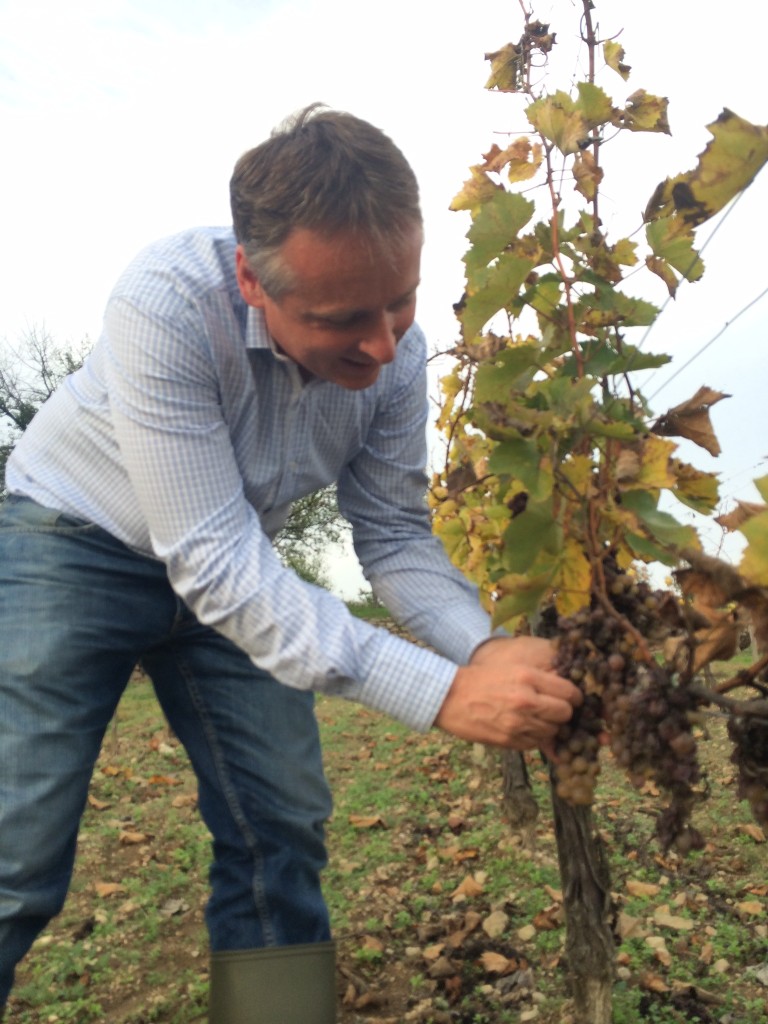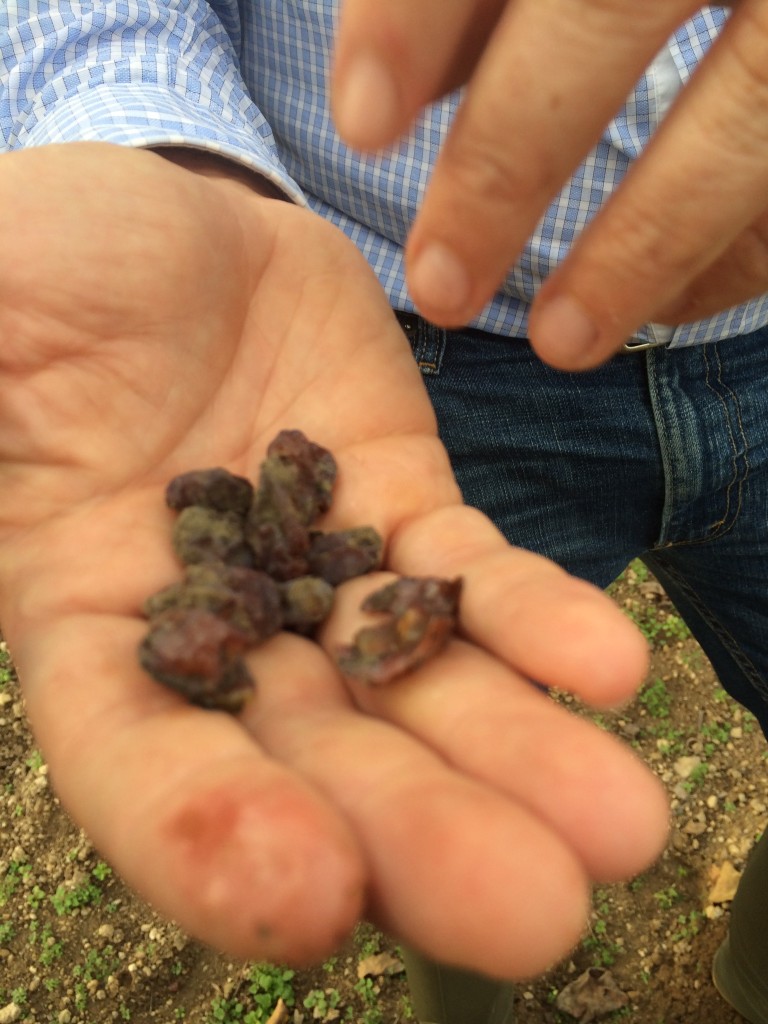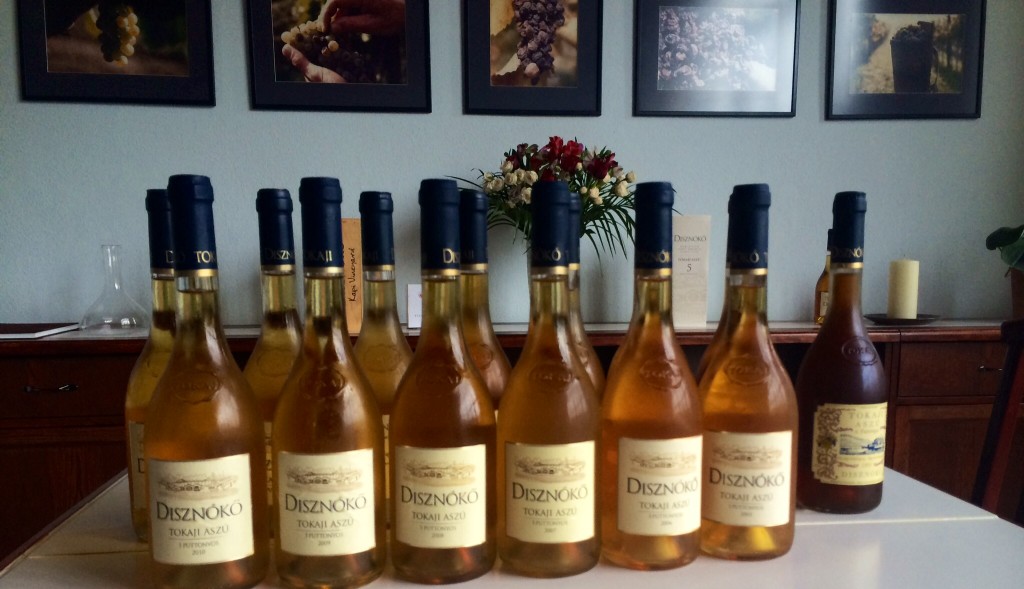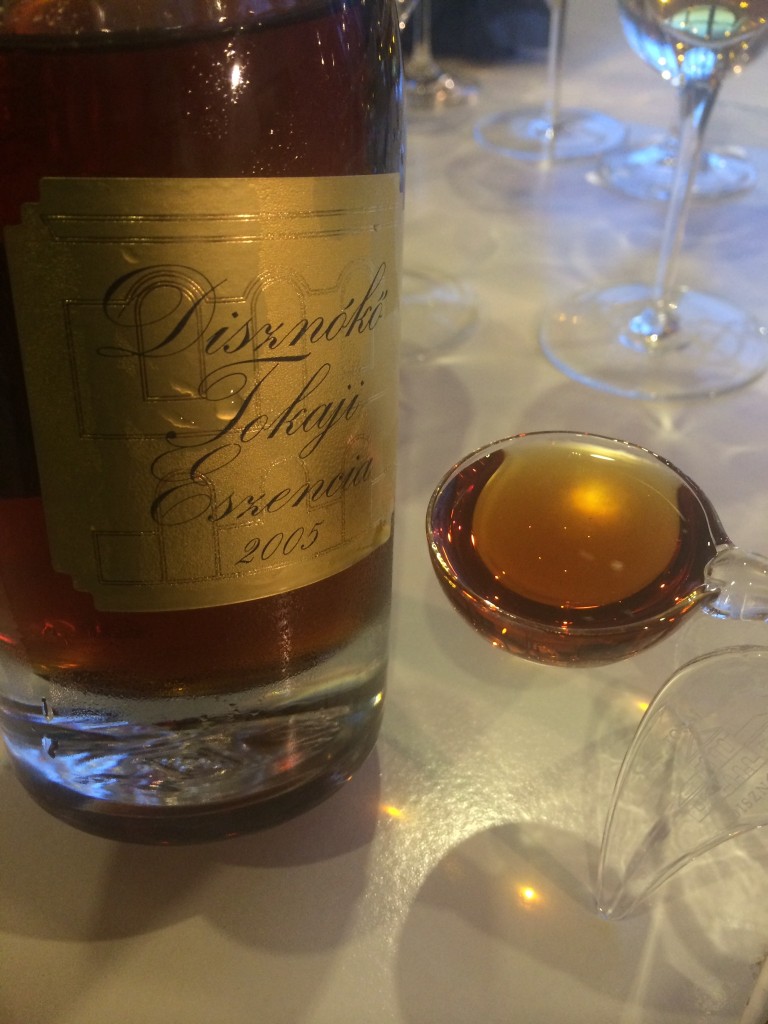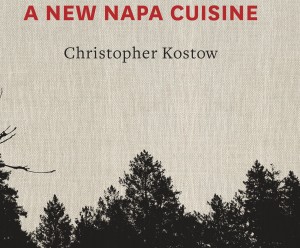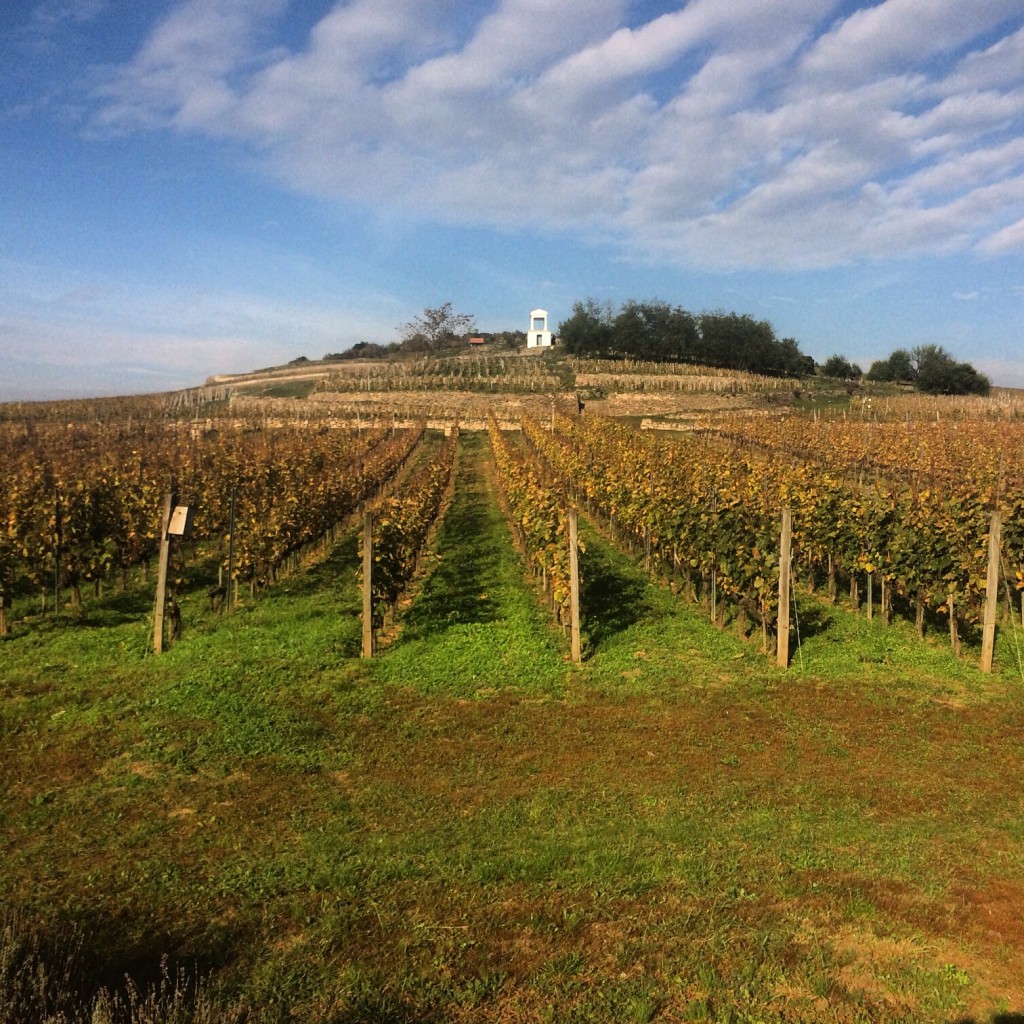
In the wine world we talk about the old world and the new world. The old world is basically Europe – France, Germany, Italy, Spain, etc. The new world is just about everywhere else – The US, Australia, South America, South Africa.
I am standing in the oldest of the old world. My travels have brought me to Tokaji, Hungary, a two and a half hour drive east of Budapest. You may not realize wine is made in Hungary. You may be surprised to learn that the area called Tokaji is the oldest delimited, or defined, wine region in the world, established by royal degree in 1737. The most famous wine here is the sweet wine known as Tokaji. It is called “the king of wine and wine of kings.” This golden to amber nectar has a long storied history, going back to the Middle Ages. Royal fans included French kings Louis XIV, Louis XV, Madame de Pompadour and Russia’s emperor Peter the Great.
Tokaji is a UNESCO World Heritage Site, named in 1992.
On this mid October day I’m visitng Disznókó with two fellow journalists. Disznókó is a brand established in 1992 but whose history goes back to 1413, when the first written mention of the Disznókó vineyards appeared. Disznókó means “pig” in Hungarian, for the wild boar roaming the 104 hectare vineyards (256 acre) although I didn’t see any.
Harvest for Tokaji is in full swing. What makes Tokaji sweet is a mold called botrytis cinerea that infects grapes when the humidity and climate conditions are right. This “noble rot,” so called because of its magical affect on the flavor of the grape juice and wine, causes the berries to darken and shrivel like raisins, concentrating the fruit juice into a luscious nectar. The grape clusters are downright ugly — you would not want to eat them. Almost black, shriveled and covered in mold. These berries are what I call jolie laide – a French term meaning pretty ugly. The fascinating thing is they make an intoxicating wine.
Furmint is the main grape variety of Tokaji, and makes up for about 60% of production at Disznókó. When Furmint is picked earlier in the season, before botrytis infects it, it makes a crisp, light and fresh dry white wine – a perfect warm weather wine or aperitif. The other main variety is Hárslevelü. Winemakers will make a Tokaji that is 100% Furmint, but they’ll also blend it with Hárslevelü and other white varieties of the region depending on the vintage.
Tokaji is a white wine region only, although there are red wines made in the region — they just aren’t called Tokaji. I love white wine, so to be in a region that celebrates it makes me happy.
We we arrive, there are bins of just picked Furmint grapes. Some are a combination of grapes with the noble rot and other grapes without it on the same cluster. These will make either a late harvest wine or be used as a base wine for extracting the sugars and flavors from the wines that will make the Tokaji Aszu. Aszu is a special wine, made from berries picked one by one off the cluster in the vineyard. It is slow, labor intensive work to pick grapes for Aszu.
I’ve seen botrytised grapes before – Semillon at Far Niente, which goes into Dolce, the winery’s sweet Sauternes-style wine. But while I’ve studied how Tokaji Aszu is made, I’d never seen the individual handpicked grapes for it like this. It’s pretty cool.
The oldest vineyards at Disznókó were planted in 1952. AXA Millésimes purchased the property in 1992 and began a renovation and replanting program. A new winery facility was built, along with the iconic “tractor shed” that looks like a flying saucer, both designed by award winning architect Dezsö Ekler. The winery holds concerts here in the tractor shed during the summer and I’m told the acoustics are great.
Ladybugs in the vineyard
Some of the vineyards are very steep, and we climb up them to get to the site of a picnic lunch. Along the way you see how rocky the soil is, with volcanic and clay soils. All the rock for the terrace walls come from the property.
The views are amazing, and the day is glorious. The harvesters are out and picking continues all day because it takes forever to pick grapes one at a time. Tomorrow we will learn just how hard it is when we go pick grapes in the morning.
I’ve never seen so many ladybugs in one vineyard, let alone on place before. They are everywhere. They land on all of us, and they seem to love the Tokaji grapes.
From up here we can see the hill of Tokaji, where the village that the region is named after sits. Most of the vineyards in the region are planted on hillsides for the best sun exposure, to ensure the grapes ripen.
Picking berry by berry
As I mentioned, Tokaji Aszu grapes are picked by hand, grape by grape. That’s because not all berries on a cluster ripen or become infected with botrytis at the same time. So you have to go in and do what’s called a hand selection.
Disznókó director and winemaker László Mészáros gives us a quick lesson in what grapes to pick and what grapes to leave on the vine. Any yellow grapes? Leave them behind. Any super desiccated grapes that look way past their prime? Leave those behind too. You want the shriveled grapes that are kind of purple to black in color and that probably have some mold on them.
This is not as easy as it sounds. It is slow, delicate work. Pull too hard and a cluster easily comes off in your hand. As you pick each berry you often find ladybugs who have found a happy home inside the cluster. There are also spiders and other bugs to contend with. The grapes are sticky, your fingernails get dirt under them. Your knees start to hurt from bending down so much. No wonder Tokaji is not an inexpensive wine to make.
Laszlo tells us we’ve picked enough grapes to make about a case of wine of 500 ml bottles. The wine won’t be released until some time in 2017, a little more than three years from this harvest date.
Vertical Tasting of Aszu
You’ll find Tokaji wines in the traditional 500 ml bottle, which is in between a half bottle (375 ml) and a full bottle (750 ml). Because of the high sugar content, once you open a bottle, the wine will keep for at least a week, so you can enjoy it slowly over time.
When you look at the label of a Tokaji Aszu, you may see the designation 5 or 6 puttonyous. Puttonyos are a measure of the sweetness of the wine and goes from 3 to 6 for Aszu and beyond for Eszencia. The more residual sugar in the wine, the higher the number. Puttonyos reference to the number of baskets of the Aszu grapes that went into making that wine. Disznókó makes only 5 and 6 Puttonyos wines.
We sit down with Laszlo to do a vertical tasting of both the 5 and 6 Puttonyos Aszu wines. Tasting a range of vintages side by side is a great way to see the vintage variations — the affects of weather on the grapes from a hot or cool year, or a dry or rainy year. It also gives you a good picture of how the wine will age. One thing is for sure, Tokaji Aszu can age 10 to 20 years or more and still be fresh and alive.
Wow. These wines are simply stunning. Not too sweet, because there’s still lots of acid in the wine that keeps them from being cloying.
The color range is incredible, from the light gold to medium gold to amber. The wines get darker as they age.
In the 5 puttonyos wines we tried vintages starting with 2010 back to 2005. In younger wines have aromas of bitter orange peel – think neroli. There’s also dried apricot, honey and a little caramel that comes from oak barrel aging. The older wines have aromas that are more candied fruit, with quince and caramel and have a creamier texture in your mouth. It’s like drinking nectar. As we taste each wine, we learn these flavors and aromas are characteristics of botrytis.
“For me botrytis character,” Laszlo says, is quite citrus, with orange zest, apricot, quite a lot of creaminess along with structure and acid.” All of us find it fascinating that even the older wines retain that bite of acid, which keeps these wines from being cloying.
Then we move onto the 6 puttonyos Azsu wines. Wow — these are distinctive wines and nothing like anything I’ve ever tasting. They are exciting wines, and still fresh and bright even though we were sampling wines 20 years old.
Disznókó does not make a 6 puttonyos Azsu every year. The conditions must be right — no major rains at harvest, a large amount of berries infected with botrytis to even be made. The last vintage was ???? which is not yet released. The current release is the 2008, so we started with that and went back all the way to 1993.
The wines are deeper amber color and the notes are more like dried caramel, black tea, caramel, mocha, toffee, dried figs, candied ginger, even coffee and cognac. So complex!
Overall the wines are richer, thicker and coat your mouth more than the 5 puttonyos wines.
The 1999 6 puttonyos Aszu is what Laszlo called a “great classic vintage.” It is dark amber, has an etheral nose of dried wild flowers, salted caramel and cognac. It is an amazing wine. Hard to spit this one out.
The rarest wine of all
The most exotic wine is the Tokaji Eszencia. As Disznókó’s Laszlo Mészáros pours this it looks more like a thick, dark amber syrup than a wine. It even looks like a dark maple syrup. This is liquid caramel in a glass. The nose has immoratle flowers, prunes, quince, black tea, molasses, and for me sourwood honey that you find in the southern United States.
The Eszcencia has a life force to it that words just can’t describe. The finish lingers on and on. When asked how long Eszencia can age, Laszlo replies the potential is “eternal aging.”
I find it fitting that the rarest wine from the world’s oldest formally recognized wine region can age for eternity.
Thank you to Disznókó and AXA Millésimes.

